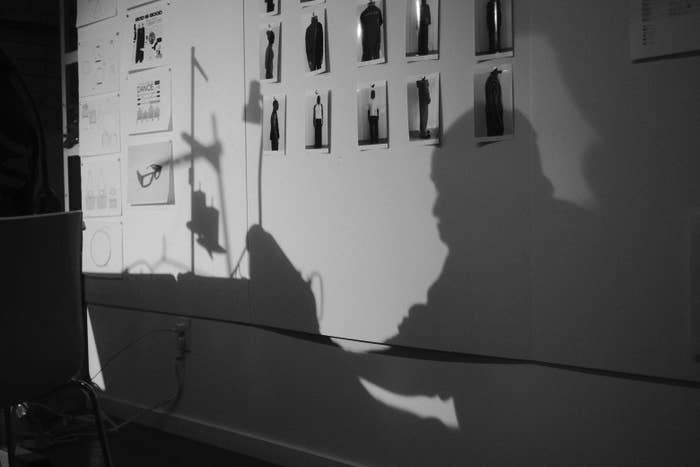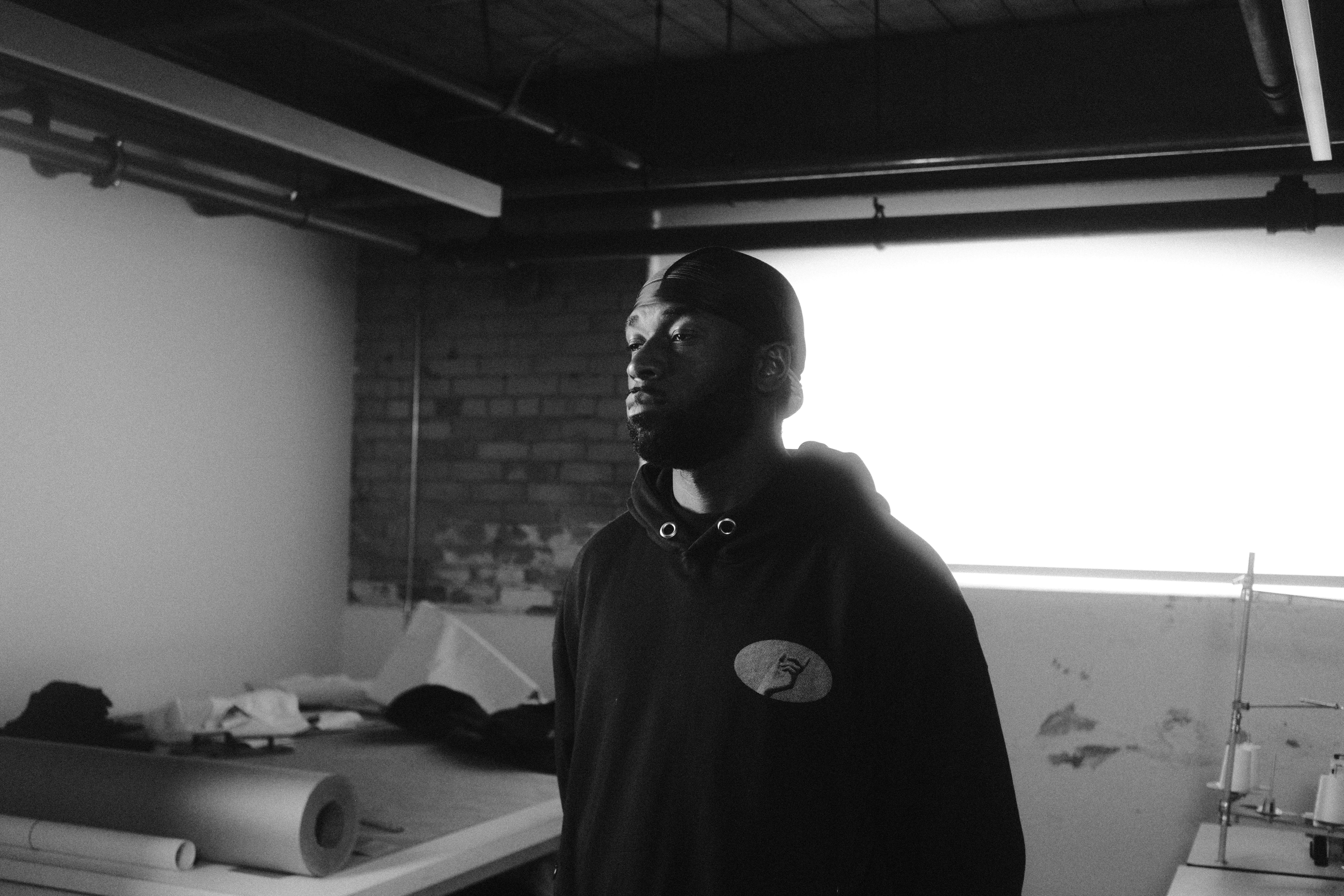Toronto designer Spencer Badu, creator of his namesake brand, continually has one eye on the creative and one on the practical.
There’s an efficiency to his clothes, where every stitch comes with a purpose, so it’s no surprise some of his inspiration comes from the uniforms we see everyday. There’s also a need to his unisex clothes to be useful, with an important fitting process that reveals whether his clothes are made for sitting, walking, and working.
None of this means the 28-year-old doesn’t have an eye for fashion. He’s already established himself as a unique creator in a sea of imitators, one with a keen eye for trends, but also a sixth sense for not falling into the usual traps of following them. Badu’s clothes stand out, and it’s no surprise that ASAP Rocky, Young Thug, and Kendrick Lamar have been seen wearing his brand.
Complex Canada’s Alex Narvaez caught up with Badu before and during this year’s ComplexCon, where he was one of the Brands to Watch. Watch the video and check out these additional questions that happened during the interview.

How would you describe the way you feel during the creation process?
I think sometimes I feel invigorated, and I think sometimes I feel defeated. There’s times as a creative when you’re trying to make something and you’re not satisfied with what you’ve made. And I think that can be like very demotivating. But I think, ultimately, I feel accomplished within the process, I feel like I’m bringing something to life and whether that’s easy or hard, I think at the end of it, I feel like I accomplished something.
I know I’m on the right path when I get goosebumps, like when it’s clear we’re onto something. And I think as a creative after a while, you kind of know when you’re not in the right territory, and you may need to take a step back and look at it from a different direction. Or just go deeper into the direction you’re going in. But the majority of the feelings that I have towards my work when I’m making something are positive ones. But there are days that are definitely tougher than others, because you’re making something that you haven’t made before. And there are challenges that come with that, but on the other side of those challenges are the things that you want.
How are Toronto and Ghana sources of inspiration for your work?
I lived in Ghana for a few years but the majority of my life has been in Canada, Toronto, Brampton. And I think for me, the overall aesthetic that my brand kind of operates in is I can think more of Toronto, it’s more industrial, brutalist. The idea of the uniform comes from Canada. And when I think of Ghana, it’s for me more the silhouettes, the colour, and the details. I think that’s where I get those references from. And ultimately what we try to do is juxtapose all those ideas and create something different, but I think both places have significance in the creative process.
I would just go and window shop. I was probably like 13-14 and these people were probably wondering, ‘Who is this kid?’ But I was just eating it all up, you know?
What were the early days starting out in Brampton like?
I think that was the catalyst to where I am now. Before I knew of Rick Owens or Raf Simons and all those European designers. What was especially important for me as a kid was something that was just unattainable, there were people like Brian Espiritu did for Legends League, or even stores like Goodfoot. There were all these areas of Toronto streetwear that were very formative for me. My friend’s dad also had a streetwear brand in Brampton, and people in the Toronto music scene were wearing it, like Choclair and Kardinal, in their music videos.
I think that was the first time that I saw people that look like me having creative ideas that come to life, and they also could make a living out of it. I remember the first time I saw a Blue Jays chain with diamonds, those are things that look impressive. I don’t need a chain these days, but just seeing people that look like me doing creative things was definitely inspiring. And that’s when I really started to realize that I could also do the same thing. And then you get exposed to bigger designers, and then it’s not such a farfetched dream. I would travel from Brampton to Toronto, and for me there was another world downtown. I would just go and window shop. I was probably like 13-14 and these people were probably wondering, ‘Who is this kid?’ But I was just eating it all up, you know?

How did hip-hop music videos shape your sense of style?
It’s funny because we’re in this Renaissance where a lot of those aesthetics are coming back to the forefront. But for me as a kid, hip-hop music was a portal into different worlds, especially with fashion at that time. A lot of artists were talking about you know, Versace or Gucci, but then they’re also wearing Avirex and Pelle Pelle, and it was another thing that I was exposed to that I wasn’t aware of. And being in Canada back in the day, we didn’t have access to those things. I remember my older brother would go to Buffalo, and he would go and buy all those things and bring them back to Toronto. So a lot of those things were like a dream, but when I think about my creativity, it’s really tied to this youthful essence of what you liked before you were told what to like. I naturally gravitated towards hip-hop music and futuristic movies. I think I try to really tap into that childlike creativity. And I think it’s endless for me. Obviously there are different eras of hip-hop but for me, the most formative parts are the early 2000s, since I was born in the 90s.

